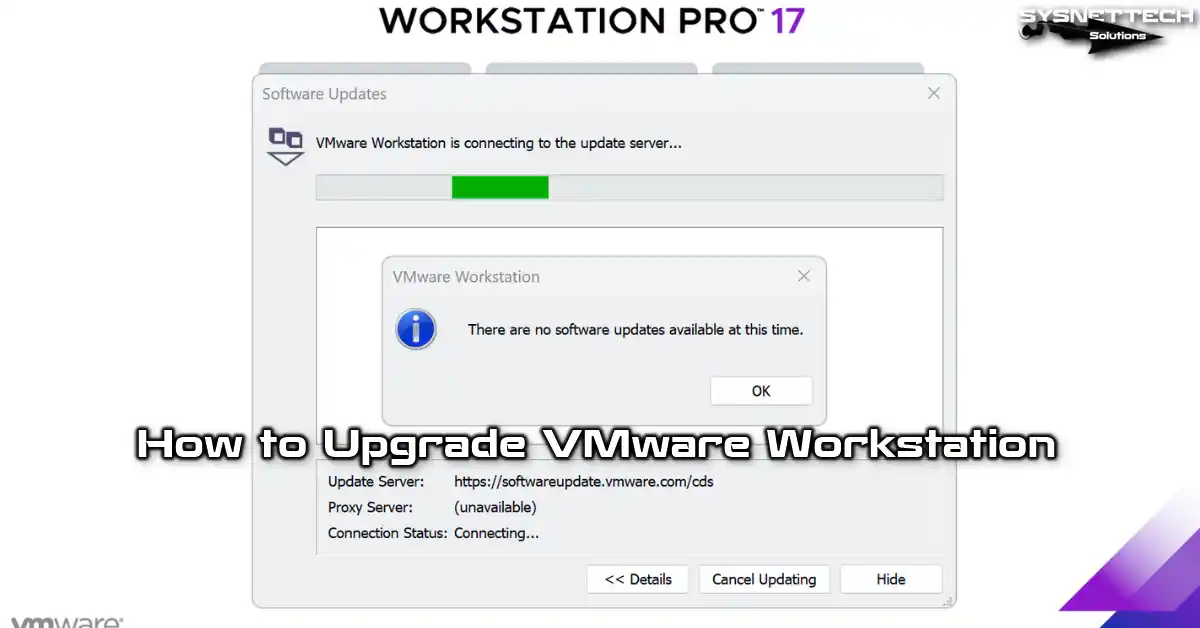In this article, we’ll examine step by step how to configure the Virtual Network connection, one of the VMware Workstation network settings.
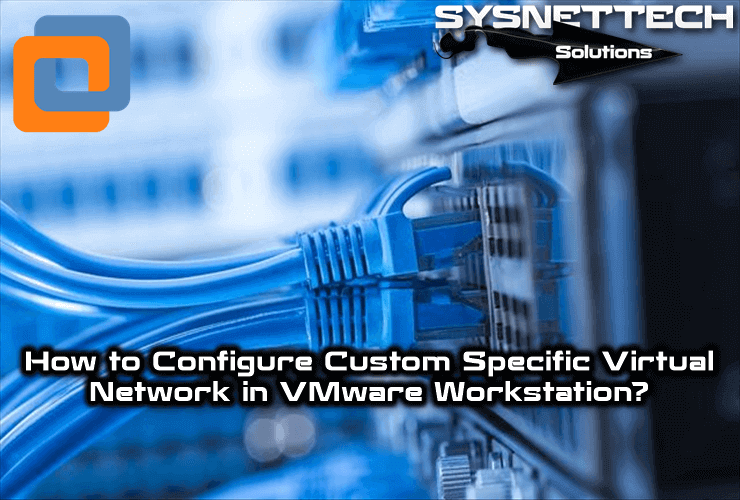
How to Configure Specific Virtual Network in VMware Workstation/Player
When you install the VMware virtualization program, VMnet is created for Bridged, NAT, and Host-Only network connections on the Virtual Network Editor.
Once you have created a new virtual machine on VMware software, you should first check the Virtual Network Editor. You can then select Bridged, NAT, and Host-Only from the network adapter’s settings for the virtual machine.
This VMware virtual network configuration is the same as other VMnet network settings. Still, in some cases, you can configure the Custom Networking to add a virtual machine to a 3rd party program and to avoid complexity.
For example, you created a new VMnet5 on the Network Editor and configured it as Bridged. Therefore, you should configure the virtual machine network configuration as VMnet5.
How to Use Custom-Specific Networking on VMware Workstation 12/14/15
The first default configuration on the Network Editor is as follows. VMware Workstation automatically configures VMnet0, VMnet1, and VMnet8.
In this window, VMnet1 is configured as Host-Only.
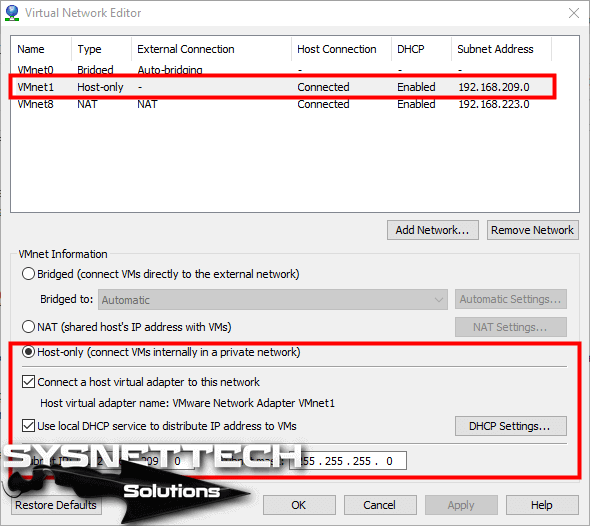
Follow the steps below to configure the custom-specific network on VMware Workstation.
Step 1
Name the two machines that you installed on VMware, Client1, and Client2, and click Network Adapter to configure the Client1 machine’s network card configuration.
When you select the Custom Specific Network option, you will see the VMnets you created, as shown below. Select VMnet1 for the Client1 machine.
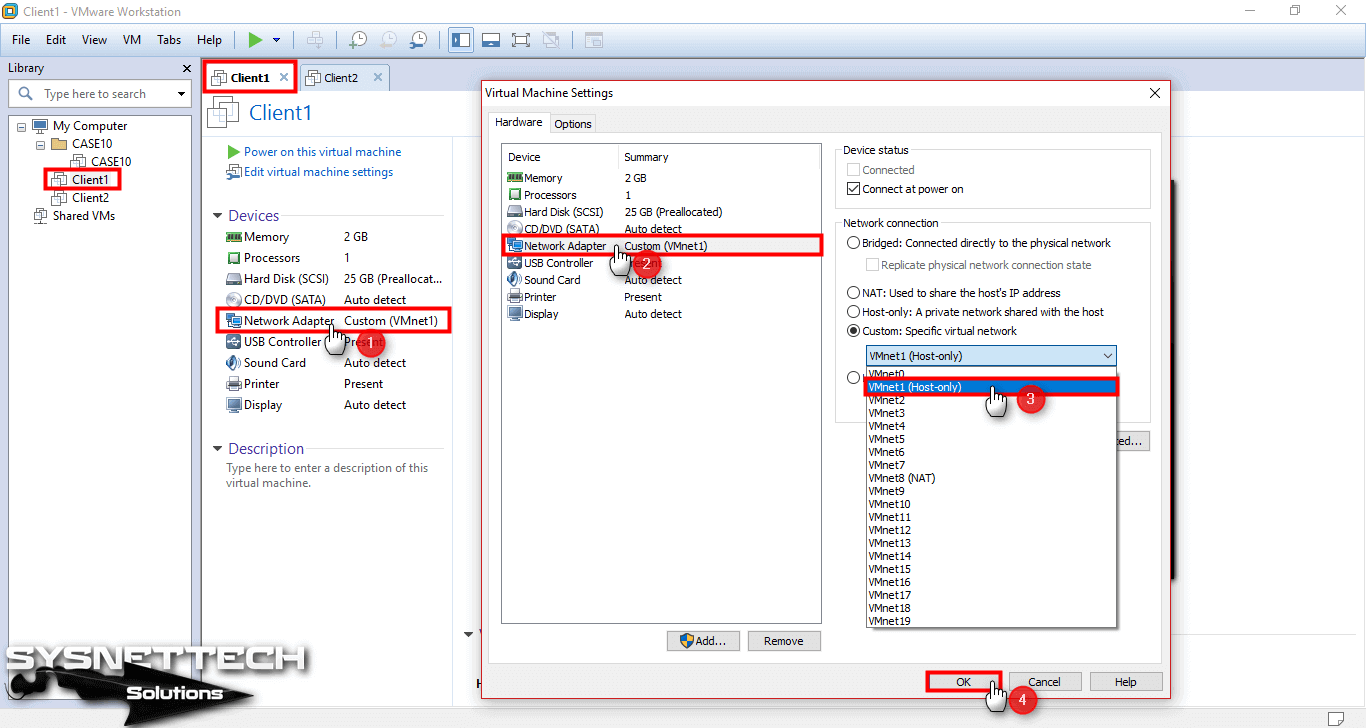
Step 2
Select VMnet1 for the Client2 machine.
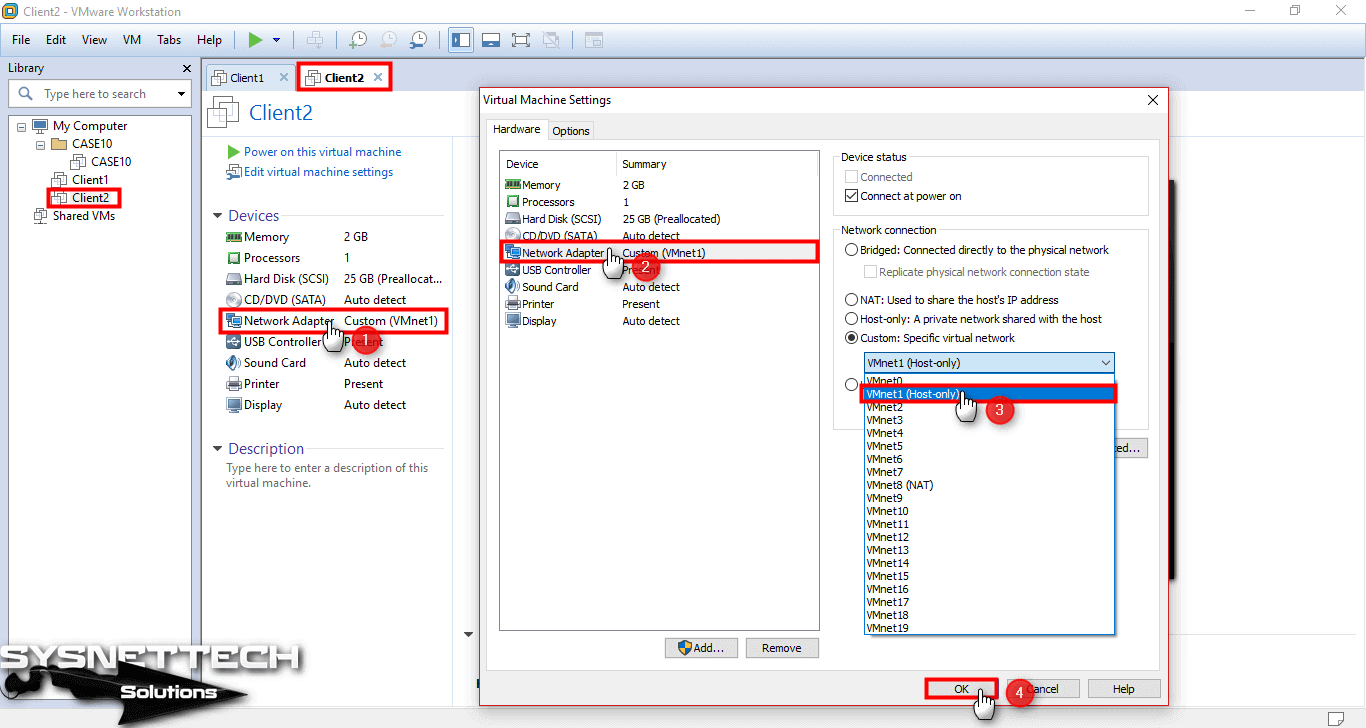
Step 3
After configuring the Custom Specific Network, test the network connection by pinging Client2 from the Client1 machine.
If Ping fails, disable Windows Firewall on both VMs.
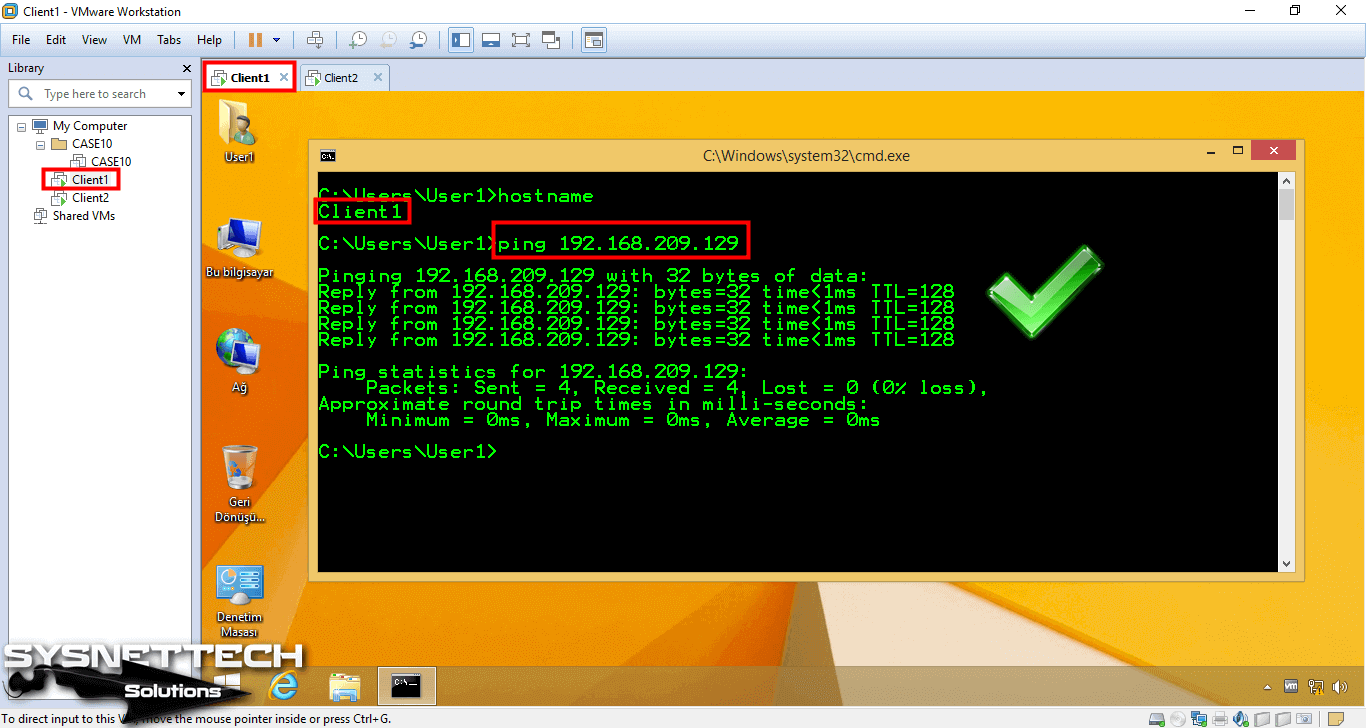
Step 4
Likewise, check the network connection by pinging Client1 from the Client2 machine.

Step 5
Since you configured the Client1 and Client2 machines on the same VMnet1, both virtual machines communicate with each other. If you configured the Client2 VM on another VMnet6/Host-Only, the VMs would not be connected.
You can think of the VMnet/Host-Only setting you created on the Virtual Network Editor as a Switch. Therefore, you can create advanced network topologies by configuring Custom Network on VMware. For example, in the GNS3 program, you can communicate with virtual machines on two different networks using a Cisco Router.
Conclusion
In this article, we discussed step-by-step instructions on how to use the Specific Network on VMware. With VMware Specific Networking, you can assign IP addresses from different IP blocks to virtual machines.



